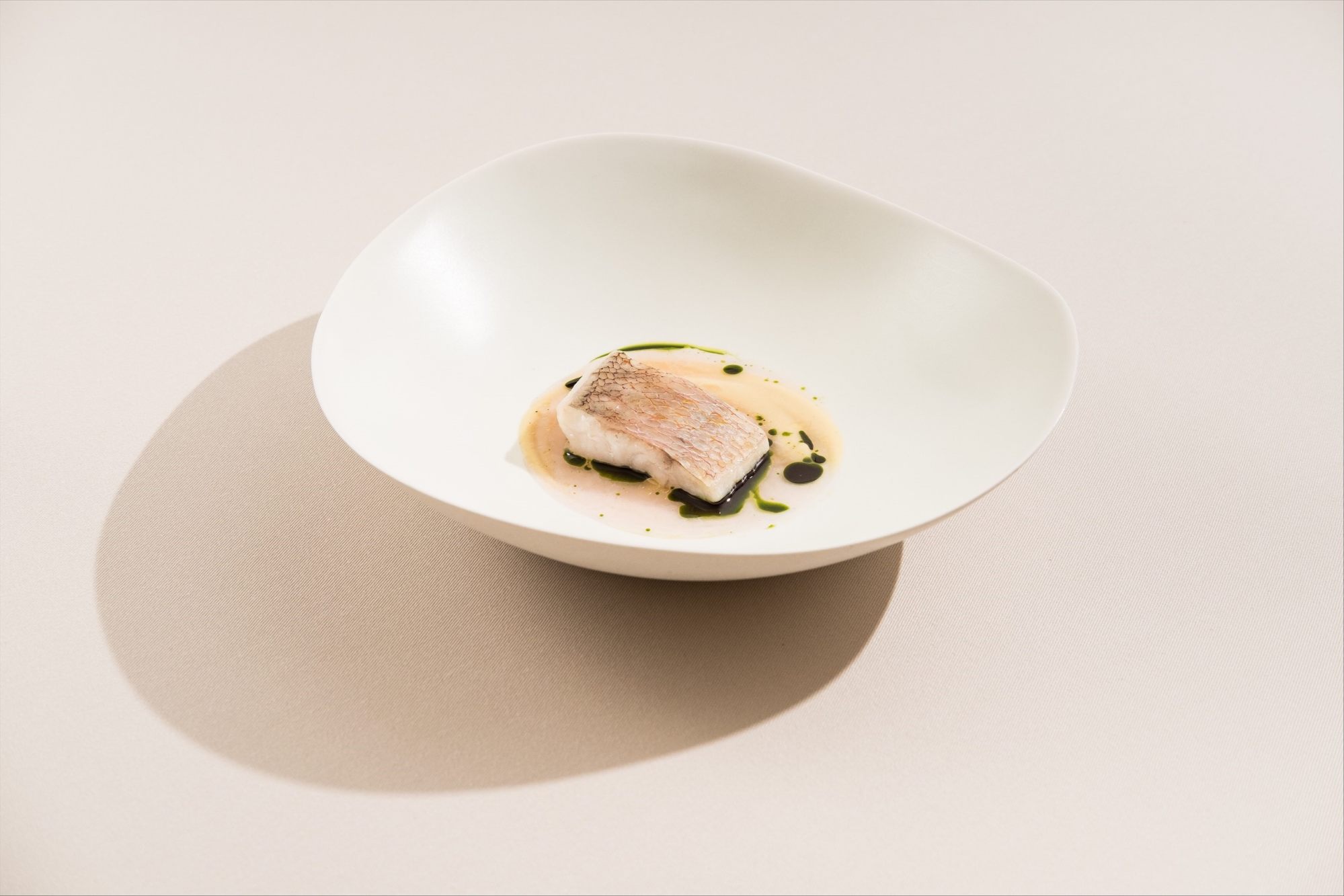
Profile | Michelin-star Korean chef on the joy of being in Hong Kong, his not-so-simple food and how seaweed works like MSG
- When Korean chef Sung Anh cooked in his family’s restaurant he knew nothing of fine dining. Now he is opening a branch of his Mosu Seoul restaurant at M+ museum
- Dining in Hong Kong has a ‘sense of excitement and discovery’ he has not felt anywhere else, he tells Bernice Chan, in part because of diners’ sophistication
“My family immigrated from South Korea to the United States when I was 13 years old. My parents used to own a Chinese-American fast-food restaurant – a Panda Express-ish restaurant – in San Diego, California. I helped them after school so I could make my US$5. I cooked hot and spicy chicken, corn chicken and teriyaki chicken.
“My father was the chef and my mother was the server. We had the food prepared and heated on top of a steam table so it was not à la minute cooking. I helped cook, serve and as the cashier since my English was the best in the house, though it was horrible back then. I have an older brother and sister, but they were more focused on studying and going to college. By the time I was in 12th grade, I could run the restaurant without my parents – and I loved it.”
What did you do after leaving school?
“Since I worked so much at the restaurant, I didn’t do much homework and couldn’t get into college. I didn’t know what to do so I joined the US Army for four years, and went to Baghdad, Iraq, for a year in 2002. I enjoyed the army because I could travel and experience so much. At that age you live for danger and find it exciting, and that’s how stupid I was.

“After four years, at the age of 24, I decided to pursue my dream to be a mechanic. In the military, I fixed cars and vehicles, looking after them. So when I left the army, I signed up for mechanic school in Arizona and was going to move there the week after.
“I parked my car and went into the culinary school, talked to a counsellor and it seemed like a fun job. They even told me a job was guaranteed, which sounded great. The school was Le Cordon Bleu, in Pasadena, California.”
At 10 he was already cooking daily: Italian chef on his culinary journey
So you changed your plans?
“I told the mechanic school I wasn’t coming, and called my future roommate and told him he could keep my deposit and that I’d signed up for culinary school instead. My parents were surprised and didn’t take it well in the beginning. But once I started going to school, I didn’t look back. Fortunately, I had amazing mentors.

What do you like about cooking?
“I like everything about it – it’s not like I like to sear fish or I like to work with meat. It’s about discovering different flavours, and reminding myself I don’t really know much. There’s always something new and there are different ways of doing things. I love the whole process of cooking. The restaurant business is one of the hardest, you put your soul into it. That’s why it’s fun, because it’s so hard.”
Why do you want to open a restaurant in Hong Kong?
“For diners, Hong Kong is considered one of the best places to eat; for chefs, there’s the abundance of ingredients and the diners’ level is up there in terms of quality. This is the reason I wanted to come here. I always knew Hong Kong was a thriving city with food, but I was more interested in its energy, the vibe.
“When I came here in 2015, on holiday, all the meals I had, there was a sense of excitement and discovery. It didn’t matter what restaurant it was, whether it was on a street corner or Michelin starred, for me it was such a joy to be surrounded by that energy. I don’t think I’ve felt that anywhere else.”
For the world, and for Hong Kong too? M+ museum opens its doors
Will Mosu Hong Kong be the same as Mosu Seoul?
“When I am in Korea, people say I cook Korean food, but I don’t. I use Korean ingredients, what’s available during the season, and I use whatever technique fits the dish or ingredient.
“With Mosu Hong Kong, I will use the same idea, but the ingredients may be different depending on what I can find here. Mosu Seoul is a seafood-driven restaurant, and there is some meat and game, too. Hong Kong has amazing seafood from what I have discovered so far, and I’m looking forward to that.”
What will the menu be like?

“My food is very simple, but simple is the hardest thing to achieve. It’s very complex because it’s harder to take stuff out than put stuff in. I try to be very honest about food, meaning I don’t try to hide anything, and when you eat it there’s a complexity due to the way I cook.
“I do my own fermentations, grow my own fungus. I don’t ferment cabbage with salt, that’s very basic. I grow my own fungus on grains and beans in the restaurant, and then extract different flavours from there.”
Can you describe one of your signature dishes?
“I make a cup out of nori. When you put hot rice in it, the moisture content makes the nori soggy, but I have come up with a technique where I can prevent this. Instead of rice, I add potato salad and put different types of seasonal seafood on top. The way we present it, I haven’t seen any other restaurant group do it that way. I think it’s the most beautiful way to showcase the ingredient itself, seasoned by seaweed.”











